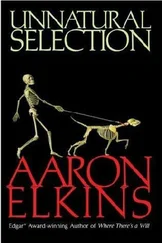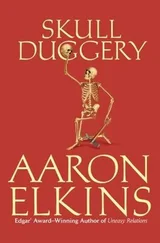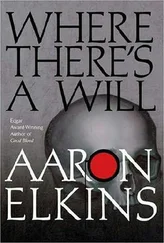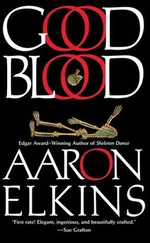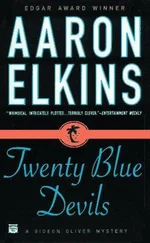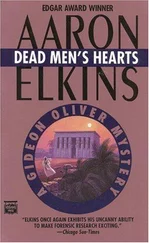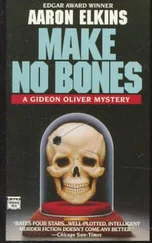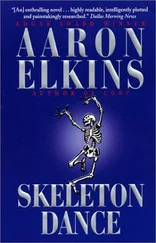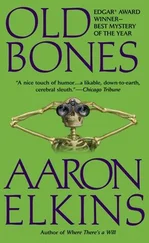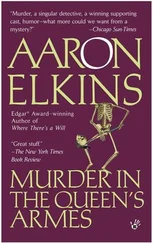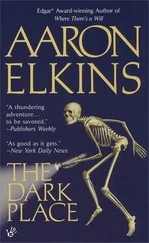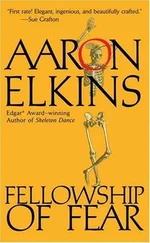“Yeah, sure, I’ll take you. I could use one myself. What about you, Gid?”
“Um . . . no.” Already, he was absorbed.
“We’ll be back in a minute.”
They were out the door and halfway through the bullpen before Gideon even nodded. “Take your time,” he mumbled, or at least he meant to.
Autopsies of skeletal remains that are performed by forensic anthropologists are generally detailed and lengthy. When done by pathologists, however, they tend to be on the sketchy side, to put it mildly. It isn’t that that pathologists are by nature less thorough or observant than anthropologists; it’s a matter of where their interests and education lie, and the less soft tissue and fewer organs that are present, the less interested they are, and the less informed. Naturally enough, it works the other way around as well. Give Gideon a kidney or a liver or a lung to report on, and he wouldn’t have much to say.
This particular report, having been performed by a medico named Bosco, consisted of only a page and a half. He hadn’t even bothered to record all of the bones that were found, only the ones that had suffered damage, and even there, the trauma were merely listed in the most general way and not described at all. (“Multiple fractures of the left scapula, the left humerus, etc.”) It certainly supported Rocco’s statement that Pietro was as every bit as “busted up” as Nola, but it was nowhere near the detail Gideon would have liked. Dr. Bosco had, however, extended himself when it came to the presumptive cause of death. An oval, beveled hole, a ballistic entrance wound, had been found in the left temporal bone. On the opposite side of the skull, another larger difetto —the equivalent bland, undisturbing term defect would have been used in English—had been left where sizeable parts of the right temporal, sphenoid, and parietal bones had been blown away. Pretty much the entire right half of the cranium was gone. Bosco’s conclusion, like Rocco’s—and Gideon’s—was that Pietro had been shot, left to right, behind the eyes and almost straight across the head . . . a typical left-hander’s suicide by handgun, as Rocco had pointed out.
In addition to the left scapula and humerus, the other postcranial traumas were fractures of seven of the twelve ribs (sides and rib-numbers not specified), the bones of the left arm and forearm—radius and ulna—the sacrum, eight of the twelve thoracic vertebrae, and four of the five lumbars.
“Huh,” Gideon muttered to himself. “Almost totally axial. Except for the left shoulder and arm, the appendicular skeleton is undamaged.”
“Come again?” said Rocco. He and John had returned without Gideon’s noticing and were in their chairs sipping black coffee from tiny, espresso-sized cardboard cups.
“I was just remarking that the axial skeleton is all broken up, but the appendicular skeleton is hardly touched. Just the one arm.”
“We heard you, Doc,” John said. “We just don’t know what you’re talking about.”
“Oh, right, sorry. Axial skeleton, the bones that form the central axis of the body.”
“The spine,” Rocco said.
“Yes, the vertebral column. Plus the skull and the ribs. The center pole of the body, more or less. Eighty bones in all.”
“And the appendicular skeleton, those are, like, the appendages?” By way of illustration, John waved his arms around.
“Right, arms, legs, collarbones, scapulas. And the pelvis. The things that kind of hang off the central axis.”
“Uh-huh. And?” John made a go-ahead motion.
“And what?” Gideon said.
“Aren’t you now going to tell us how many bones the appendicular skeleton has?”
“No. Well, all right. The usual count is a hundred and twenty-six, if you insist.”
“Thank you, I feel better. More complete, you know what I mean?”
Gideon spotted a third tiny cup of coffee on the desk. “Hey, is that for me?”
“Yup,” Rocco said. “You said you didn’t want it, but we figured you’d take it if we brought it.”
“I’ll take it if you don’t want it,” John said.
“No, thank you, I can deal with it.” He downed the three ounces in a couple of swallows that lit him up. He shuddered pleasurably. “Thank you. Now I feel more complete. Okay. Now, you remember how Nola had all those broken bones in her legs, but hardly any above the waist, other than some vertebrae, and none at all in her arms?”
“Sort of,” John said. “Which proved she was conscious when she fell, right? Because she landed on her feet.”
“‘Proved’ is maybe putting it a little strongly, but yes, that’s right. But Pietro, you see, is almost the exact opposite: no broken bones at all below the hips, and—with the exception of the left arm and shoulder—no fractures to his appendicular skeleton.”
“So he didn’t land on his feet?”
“Correct. He landed flat on his back; well, apparently partly on his left side, it looks like. That would have been when the arm was broken. But legs, feet . . . all undamaged.”
“Meaning he was probably not conscious when he fell.” This from Rocco after a moment’s processing.
“Correct.”
“O . . . kay,” John said thoughtfully. “So what does that tell us?
“Not much, I’m afraid, when you come down to it. It’s interesting, but it doesn’t really change anything; it just confirms what we thought before—that Pietro, unlike Nola, was dead before he fell. But we already knew that because the skull fragments found on site showed that he blew half his head off up at the top.” He sighed.
“Well, what did you expect to find?”
“Who knows? I guess I was hoping for something a little more definitive, something that might lead in a constructive direction as to what really happened up there. I just cannot buy the idea of his climbing down the cliff to shoot her after her fall, and then huffing all the way back up to the top to kill himself. The more I think about it, the less sense it makes. You said that yourself, Rocco, and it’s true.”
They sat mulling this over for a little while, and then Gideon abruptly shook his head. “Nope, it’s too weird. I tell you what, Rocco: I don’t think Pietro killed her at all. I think you’ve got a double murder here.”
“But that wouldn’t explain—” Rocco began.
“There’s a lot it doesn’t explain,” said Gideon. “But it does give us a credible answer to the question of why Pietro would have shot her down at the bottom and then climbed up to the top to shoot himself.”
“The answer being that he didn’t, is that what you mean?”
“Exactly. Someone else killed them both.”
John nodded. “Seems like a possibility to me.”
They both looked at Rocco. His response came only after taking in and letting out two long breaths. “Well, it doesn’t to me. I mean, yeah, I guess it’s possible but, let me tell you, you don’t start a reinvestigation because something’s possible . You need a lot more than that. Like a little evidence, for instance? You need someplace to start.”
“Would a few plausible suspects help?”
“Depends on what you mean by ‘plausible.’” But he didn’t look optimistic.
Gideon told him about the once-imminent sale to Humboldt-Schlager and what it would have meant to the Cubbiddu sons, and about Cesare and how Pietro had been on the verge of cutting him out of his will. Rocco listened, but it didn’t make him any more receptive. “I appreciate all your help with this, I really do, and—who knows, maybe there’s something to it. But I’m sorry, it’s just not enough to get this thing reopened.”
John agreed with him. “If it was my case, I’d have to say the same, Doc. Just because some other guy might have some possible motive . . . that’s not grounds for committing your resources to a formal investigation. But,” and he slowly shook his head, “ something’s sure screwy about the way it stands now.”
Читать дальше

